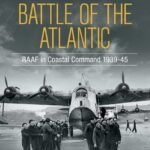
Three aviation history books which have almost no actual flying between them.
Peter Adey, Air (London: Reaktion, 2014). This is airminded in about the broadest possible sense! It’s a fascinating (and beautifully illustrated) ramble through, or ransacking of, centuries of philosophical, scientific, medical, literary, artistic, and architectural responses to the idea and reality of ‘air’. Aviation features heavily in the first chapter, which moves from Airlene, (possibly) the first air-born baby, via a bizarre poem by Sefton Brancker imagining his prehistoric ‘aerial ancestors’, to Lindbergh’s tickertape parade through New York, but taking in the Eiffel Tower and Manhattan’s steam heating system along the way. The rest of the book has very little aviation but is just as eclectic, leaping from (for example) from the 1934 on-air murder mystery Death at Broadcasting House to the origins of resuscitation to Tibetan sky burial. It’s a real tour de force from Peter (who’s already had one book in this blog series), and I’m not just saying that because he called Airminded ‘by far the world’s best resource for the history of air, geopolitics and society’ (219)!
Alastair Gordon, Naked Airport: A Cultural History of the World’s Most Revolutionary Structure (Chicago: University of Chicago Press, 2008). This is much more of an architectural history than a cultural one (though there is certainly some of that), and the claim that the airport is the ‘world’s most revolutionary structure’ is never really justified. Nevertheless, this is a fabulous book which traces the origins of the airport in Europe in the 1920s through the golden age of American terminals in the jet era and ending with signs of rebirth (outside America) by the end of the century (and it is very much a post-9/11 book). Gordon’s focus in on the planning, which necessarily involves the clash and compromises between the visions of architects and the needs of politicians and managers — I particularly liked how much attention he pays to the airports which never got built, or at least were not built as they were imagined. He does very well to relate the turnover in terminals in the latter half of the 20th century to the progress in aircraft technology, particularly in terms of size (and it’s not just about runways and hangars: the 747 disgorged more than twice as many passengers as the 707, and they all needed to be handled). Lots of fascinating fact(oid)s: the TWA terminal at JFK was directly inspired by the Sydney Opera House; Dallas-Fort Worth was so decentralised that they couldn’t decide where to hold the dedication ceremony! My only complaint about Naked Airport is that many quotations and images are not cited properly or, often, at all, which diminishes its value for scholars.
Mathew Radcliffe, Kampong Australia: The RAAF at Butterworth (Sydney: NewSouth Publishing, 2017). When I was a kid I used to read books about the RAAF and wonder why it had this base called Butterworth in faraway Malaysia. And not just a rough forward base, either: two out of Australia’s three (or so) Mirage III squadrons were stationed there between the late 60s and the late 80s. Kampong Australia does fully explain the strategic rationale, such as it was, for the RAAF being in Malaysia, but it is otherwise not very concerned with Butterworth in any airpower context. Rather Radcliffe’s interest is in what life was like for the Australians, and their families, who rotated through Butterworth every couple of years. So it’s partly an institutional or administrative history: there are chapters on the establishment of the base, housing, education (for the children), healthcare and so on. More than that, though, the thread running through the book is the relationship between the Australians and the local ethnic Malay, Indian and Chinese communities. In many ways this was what pretty much what you might expect, given the overlays of White Australia, decolonisation, independence, and the Cold War; but while the experience certainly could underscore perceptions of racial and cultural difference, Radcliffe shows, particularly through the skilful use of oral history, that it was often more complicated and interesting than that. (But if you want a bad guy, there’s the Department of Defence, which through to the early 1970s had an official but undeclared policy of discouraging marriages between service personnel and Malaysian civilians, to the point of proclaiming fictitious legal barriers to returning to Australia when even the Department of Immigration had no problems with any servicemen marrying local women and bringing them back to Australia.) More of this sort of thing, please.
![]() This work is licensed under a Creative Commons Attribution-NonCommercial-NoDerivatives 4.0 International License.
Permissions beyond the scope of this license may be available at http://airminded.org/copyright/.
This work is licensed under a Creative Commons Attribution-NonCommercial-NoDerivatives 4.0 International License.
Permissions beyond the scope of this license may be available at http://airminded.org/copyright/.



